Decorating & Design
February 1, 2018
6 Ways To Embrace Imperfection At Home With Wabi-Sabi
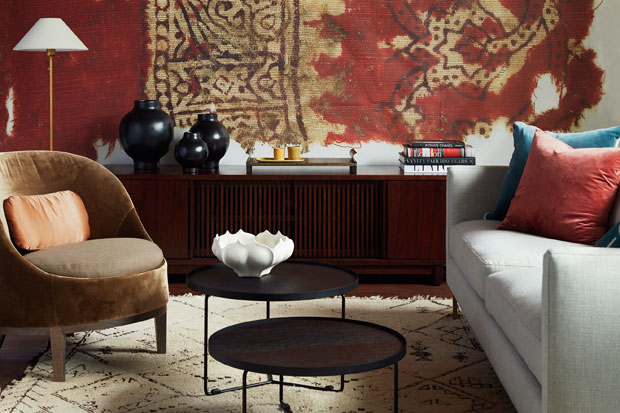
In an age of Photoshopping and image filters, there’s something refreshing about celebrating, instead of concealing, our flaws. That goes for embracing the signs of age homes bear over time, too. In our book, that’s evidence of a well-loved and lived-in space. While it may sound like a new phenomenon, this way of living — or wabi-sabi as it’s known — has been part of Japanese culture for centuries. Wabi embodies living simply, while sabi refers to the beauty in aging authentically. Feeling inspired, we decided to explore old and new techniques for embracing imperfection in the home.
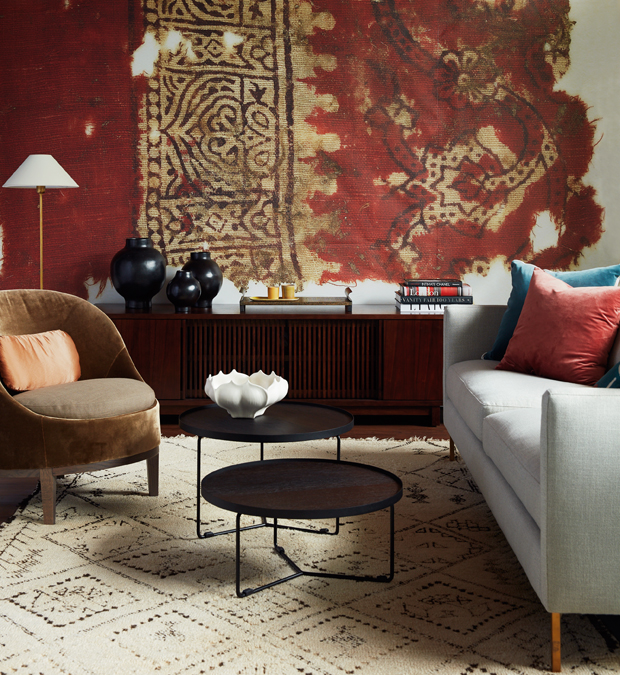
Tattered and faded, this blown-up print of a vintage textile from The University of Oxford’s Ashmolean Museum has graphic impact as a mural. The frayed edges and block-printed pattern are especially eye-catching next to a sleek credenza and leggy metal tables.
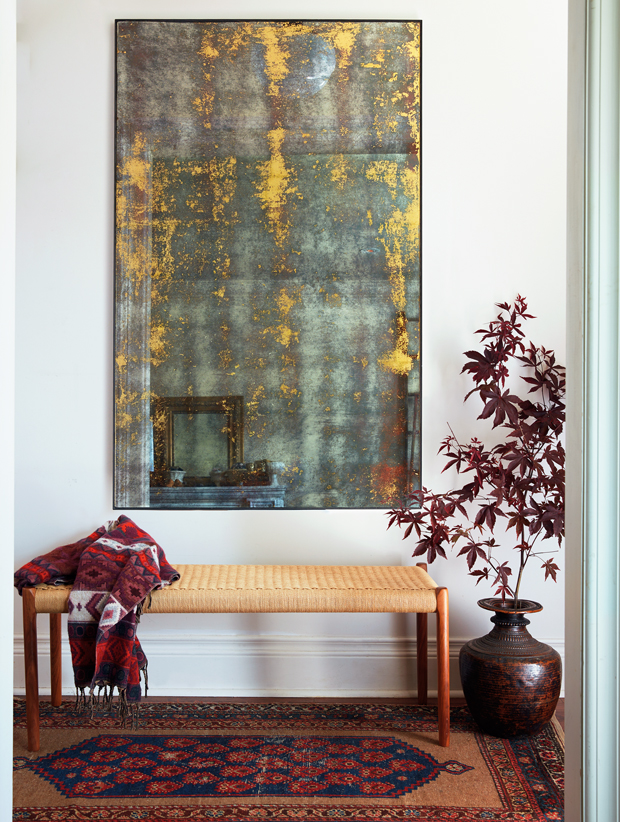
Although this mirror isn’t centuries old, gold leafing behind the glass gives it an aged appearance. (When you can’t get the real thing, it’s okay to fake it with special finishes.) A beautifully worn vintage rug and a weathered copper water jug from Nepal give this look authenticity, while a contemporary woven bench completes the mix of new and old.
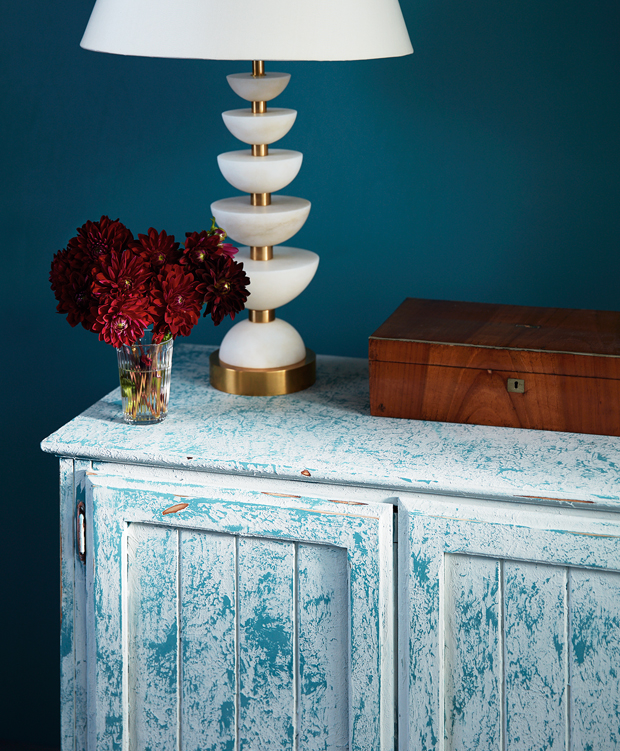
Love the timeworn look but don’t have the time to wait? Try Saltwash, a product that’s mixed with paint for a textured appearance, followed by a light sanding. Pair the finished piece with sleek accessories to avoid rustic overdose.
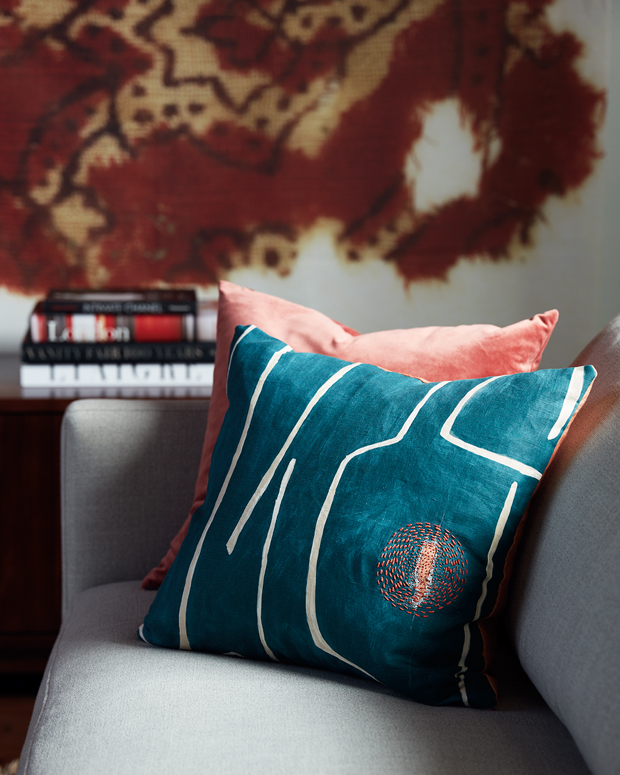
Turn holes in fabric into cool focal points using Japanese sashiko stitches. Choose a contrasting fabric for the patch, then use a sewing hoop and needle to stitch a repeating pattern around the hole.
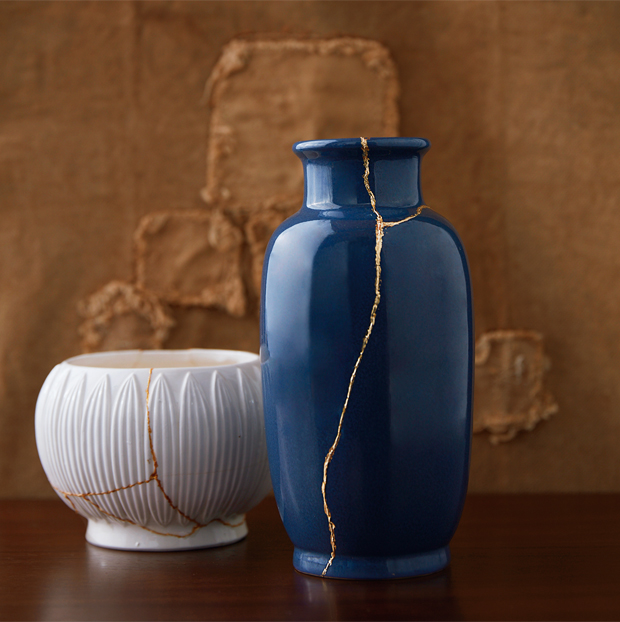
Instead of throwing out damaged pottery and china, consider mending it using a version of kintsugi, an ancient Japanese technique also known as “golden joinery.”
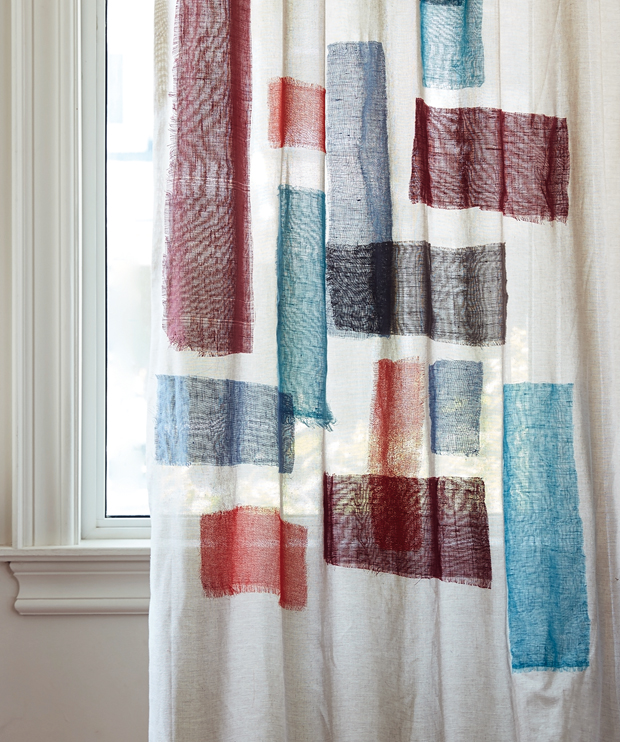
This patchwork practice comes from the word boroboro, meaning “tattered” in Japanese. Rather than discarding drapes with small stains or rips, use fabric remnants to cover imperfections. Adding extra pieces of colorful fabric creates a stained-glass effect.
Kim Jeffery
House & Home October 2017
Kai Ethier and Jennifer Koper

